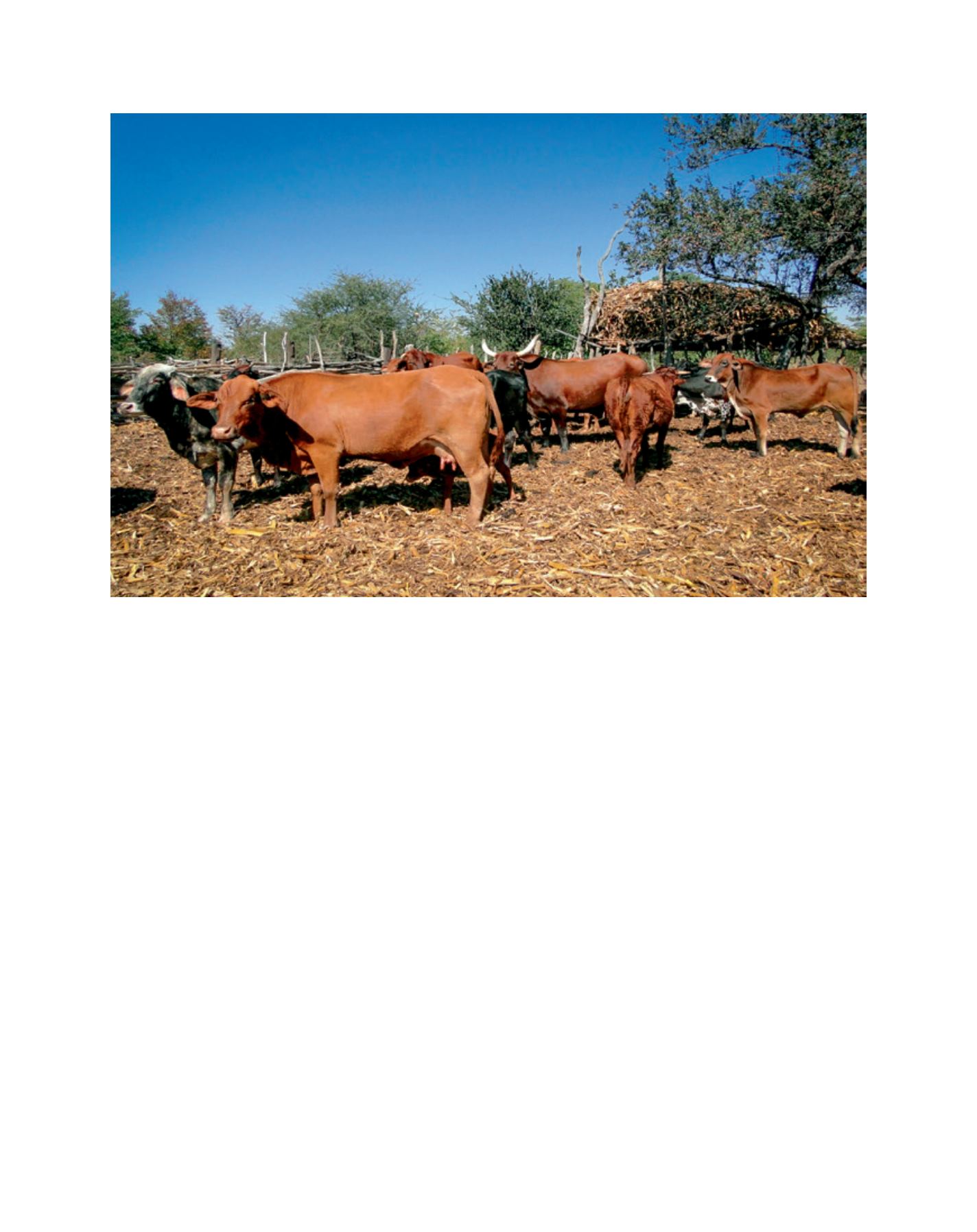

[
] 242
Image: ESAFF
Animals’ droppings and urine on maize stoves are mixed as the animals step on it; in three months it will be transferred to the field as manure
The primary objective of this project has been to promote
a shift to agroecological farming. This involves rebuilding
soil organic matter and protecting it from further depletion,
and promoting a return to a productive diversity through
intercropping and rotation. By increasing biodiversity and
habitats, farmers are restoring the balance between pests
and natural predators and attracting pollinators to improve
yields. With market in mind, the second objective was to
explore opportunities presented by organic certification and
market development for Zimbabwe’s smallholder sector in
providing organic produce.
The project area is in nine districts of Mashonaland East
province, which ranges semi-arid to dry sun- humid, provid-
ing a strong empirical basis for testing permaculture methods
and the different strategies to be employed. The initial base-
line revealed that all farming households were producing at
below subsistence level, with extremely low levels of agrobio-
diversity, leaving them vulnerable to adverse ecological, social
and economic pressures. The level of farmers’ coordination
was low, affecting information sharing transacting costs and
collective action to address natural challenges, with food and
agricultural inputs regularly used as political tools.
This project is indicative of the situation in the whole
country. The average maize yield in Zimbabwe in 2012
was 83 kilograms per hectare, bearing in mind that the
US average is 10 tons per hectare. Having started at below
subsistence-level productivity, some of the project farmers
have since achieved the equivalent of 8 tons per hectare
using wholly organic methods. The word ‘equivalent’ is
used here because on their communal smallholdings of
between 1 and 1.5 hectares each, the farmers are encour-
aged to diversify their crops to include herbs, fruits and
vegetables, some for household consumption and some
for market. This is generally not considered in standard
measurements of farm output which focus on primary crop
yields only, so it remains invisible to national statistics.
The success of the project was measured through a series
of indicators such as relative increases in farm diversity,
yields and incomes of the initial 591 participating farmers.
Within the 18 months of the project, agrobiodiversity
had increased by 122 per cent, yields by 72 per cent, and
incomes by up to 90 per cent.
By the time the project entered its second phase a further 200
farmers had joined, either through new or existing associations.
Furthermore 3,562 more members were incorporated into the
national organic membership body, resulting in Zimbabwe’s
first 160 hectares of locally certified organic land with its
produce entering the domestic supply. After only 30 months,
the 40 associations, having begun at below subsistence produc-
tivity levels, had earned US$69,880 between them.
From the outset, it was clear that aligning the demands of
the market with sound ecological practices would be a deli-
cate balancing act. The emerging reality is that the market
is also demanding diversity. Central to this project has been
facilitating the generation and transfer of knowledge, skills
and confidence to harness the potential of natural and social
D
eep
R
oots
















